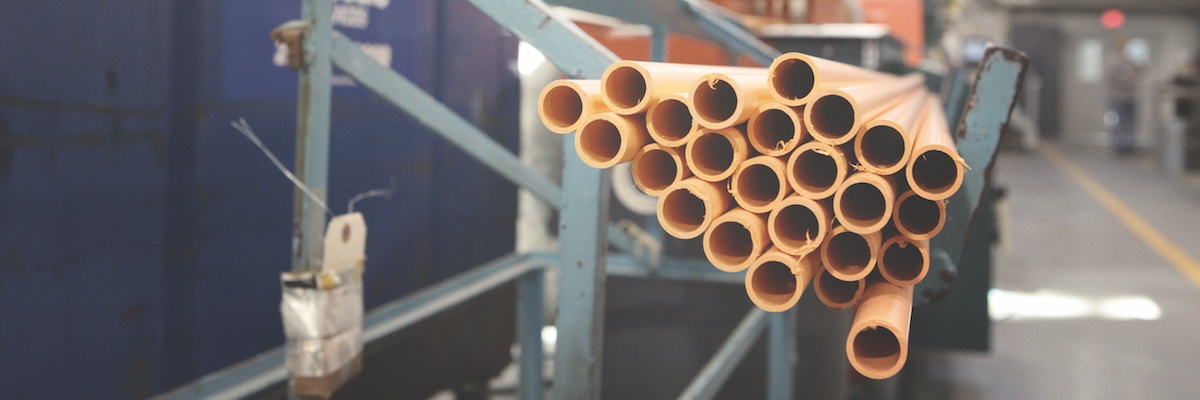How to Select the Right Installation Partner for your Fire Sprinkler System Project
The long-term reliability of any fire sprinkler system comes down to two things: 1. The quality of the piping material and 2. The installation. Selecting the contractor to install your fire protection system is one of the most important decisions you’ll make in this process.
The good news is there are a lot of reliable, professional contractors from which to choose, you just need to know what to look for. The following are five qualities that tend to correlate to fire protection system reliability:
- Cooperation
- Reliability
- Reassurance
- Advice
- Professionalism
But how can you evaluate a contractor for these traits in an interview? To help, we’ve compiled the following questions to ask.
1. What are my piping material options?
There are multiple material options for fire sprinkler system pipes and fittings. Some materials include: CPVC, steel, copper and PEX. At a minimum, they should list the two most prevalent materials: CPVC and steel.
2. What are the pros and cons of each?
Listen for options and a subject matter expertise beyond one specific material. This shows that your potential partner is knowledgeable and can help find the right material for your specific project.
3. What brand of material do you recommend?
After your meeting, go online and research the material brand the contractor recommends. Ideally, the brand will have a dedicated site that offers transparency into material capabilities, performance and characteristics. Search for other educational resources that make sure installers and end users have all the information needed to install a reliable system.
4. Why do you prefer the recommended material?
Look for an answer that draws on experience using the material and how utilizing it benefits you, the end customer. Also, they should speak to experiences using other material types, which demonstrates at least a cursory understanding of each materials’ capabilities.
5. What are the building code regulations in my area?
Knowledge of the local building codes and regulations is important to avoid compliance issues down the road. Certain materials aren’t approved for specific applications.
6. What can you tell me about the chemical compatibility and ancillary parts of your recommended brand of material?
This question reveals the reliability of the material your potential partner recommends along with their knowledge of their chosen brand’s testing process. Every piping system has compatibility issues. For example, air and water cause corrosion in metallics while CPVC may have concerns with ancillary products.
Certain brands, like BlazeMaster® CPVC, go through extensive third-party testing to ensure the reliability of their materials, while others do occasional in-house tests. Choose a partner that only uses materials in a monitored program with an up-to-date product list.
7. What joining method do you employ?
This answer will depend on the type of material selected for the project. If steel, do they use experienced welding professionals to avoid beads forming around the interior of the pipe? Will they require threading machines onsite with cutting oils which can lead to a dirty jobsite? If they recommend CPVC, the contractor should recommend solvent cement welding over other types of joining methods. Solvent cement is the strongest, most reliable and fastest way to join a CPVC system.
8. How do you account for piping thermal expansion?
All piping expands and contracts with changing temperatures. If the installer doesn’t take special steps to alleviate this pipe stress, it could result in long-term damage. This is more of a consideration for CPVC systems than steel.
This question is especially important if your project is in an area that experiences high fluctuations in temperature. Stable environments are more easily accounted for.
9. Do you have a certified water-based system professional (NICET Level 3 or 4) on staff?
NFPA offers a number of certifications to verify the capabilities of those responsible for fire protection system design and installation. Select a partner that holds a certification or has a member of their staff with one. They should be able to speak knowledgeably about general NFPA codes and standards.
10. What type of relationship do you have with suppliers and manufacturers?
Many suppliers and manufacturers will come to the job site and provide education if needed. Ensure your partner has a strong relationship with suppliers and manufacturers and gauge how involved they are in the process.
11. Have you completed the piping material manufacturer’s training?
Most material manufacturers understand that a solid installation is required to create a quality system, so they’ll offer some sort of in-person training along with online resources. Ensure the partner you select has taken the certification and understands best practices.
12. Has your team retaken the training within the past two years?
Techniques and tools change over time. Experience is valuable, but refreshing training every two years is important for staying up-to-date on the latest best practices.
13. Do you have any customer references I can speak with?
Happy customers are often more than willing to serve as a reference. If they don’t have any references, beware of working with them.
Looking for more tips on how to select the right installation partner? Contact a BlazeMaster Fire Protection Systems expert for more information.


